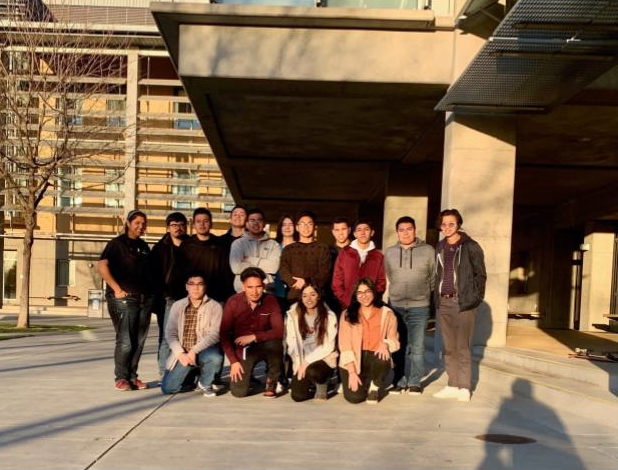Engineering Service Learning is unique where within each project, it may take years to complete, yet students from one semester’s team rarely overlap into another semester’s team. Consequently, while the Unmanned Aerial Systems (also known as Unmanned Aerial Vehicles) project focuses on one project at a time-- currently, the early detection of nematodes in walnut orchards –where the project is during each semester varies greatly.
At the beginning of this semester in January 2020, only a few students have had experience in Engineering Service Learning before. It made the transition from knowing absolutely nothing about the project to having complete knowledge of the whole take a couple weeks. Establishing out roles for every member was smooth sailing, but there were a few rough patches, most notably where the team had to restructure to find a constructive way to effectively communicate. Once then, we worked. Our PDR (Preliminary Design Review) Poster and Presentation described everything the previous semesters have accomplished, and our Semester Proposals showcased what we planned to accomplish during by the end of the Spring 2020 semester.
One of the first things that was revealed to the team was the separation into a software team and a hardware team. While some of the students in the software team were in computer related fields, none of us had ever worked with the software presented to us: OpenCV with Python 3 and Microsoft ICE. While Microsoft ICE allowed us to understand the concept of image stitching, we eventually merged the two teams into one to all focus on OpenCV. OpenCV therefore, is an open source project for computer vision and includes all the same abilities as Microsoft ICE. On the hardware side, things were more hands on. By practicing flying the drone and learning how to take thermal images with the drone, the hardware team was vital to the project, if the team went into the field. The team planned to visit the Kearney Agriculture Research Center (KARE), a field station owned by the University of California Regents located in Parlier, CA. Here, we planned on flying the drone in a realistic setting and conducting preliminary code testing on walnut orchards. However, unfinished code and especially, COVID-19 prevented us from visiting KARE for any field testing.
Before COVID-19 forced UC Merced to close campus, the Unmanned Aerial Systems team would meet every week to discuss weekly plans and collaborate on the project. The closure of campus led to remote learning over conference calls, abruptly changing the entire structure of the team in unprecedented ways and dramatically decreasing workflow as it did in almost all workplaces. While it forced us to make our online communication as best as possible, setbacks insured, but it did not stop us from being productive.
The biggest problem from the beginning of the semester was the lack of instructions left by the previous semester on how to install or understand any code we could find. To prevent this next year, we compiled SOP (Standard Operating Procedure) documentation to instruct future semesters step-by-step on how to work upon our code. Alongside this, the main goal of the semester was to complete Phase Four of the project. Phase Four included the Bottom-Up development: basic documentation on how every single part of the project connected to each part and functioned. It also included the DFMEA (Design Failure Mode and Effects Analysis) documentation, which discusses ways and how each part of the project may fail and how often this may occur. This can direct designers on which parts to improve to reduce possible failure.
As the semester comes to an end, there are a few more requirements before the team parts. The year began with the PDR Poster and Presentation and ends with the FDR (Final Design Review) Poster and Presentation, which describes and displays the progress of the project thus far. The end of the year is marked by Innovate to Grow, UC Merced’s School of Engineering event for student projects to showcase their progress and work to be judged for the best project. The Unmanned Aerial Systems team will once again be competing in this year’s Innovate to Grow on April 15th, 2020.
While the semester was short and cut off abruptly by issues far beyond anyone’s control, the team pushed to make as much progress in the project as possible. Finding clarity in how to proceed in the project, making sure we push for the most efficient and user-friendly design, and making the project even easier on the teams to follow were just some of our main goals. We close the year off by leaving our mark on a project that will help improve society. Indeed, we have fulfilled the Service of Engineering Service Learning.


